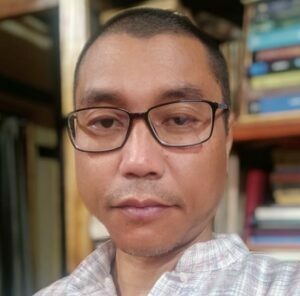In the worldview of the Meeteis, two mountain peaks in Manipur, Koubru and Thangjing have been depicted as their prime deities indicating control over marked spatial entities. This narrative have been misread by many as one of the many ways to legitimize historical claims over lands despite emerging contestations.

By Dhiren A Sadokpam
In the last six decades, the presence of the so called Northeast India is felt through violent episodes witnessed since the dawn of India’s independence. The violence that one refers to here can be more or less categorized into – violence between the state and the non-state actors, violence among the non-state actors themselves, ethnic violence spurred by religious and cultural antagonism and inter-state conflicts. However, there are many layers to violence and conflict. At times, a conflict between two parties is marked by more than one issue of contention. Shifting triangular relationship amongst Manipur’s Meeteis, Nagas and Kukis in recent times highlight this dynamics.
Multiple identity articulations are the most dynamic aspect of Manipur’s contemporary political and cultural history. They also shape the contours of the representative institutional politics and civil society movements. Many resort to recovering past memories with newly constructed image of the “aggressive other”. This has spawned writings (and politics) on the issues of indigenous identity, land and territoriality, and in recent times, on illegal migration.
In some cases, the construction and re-construction of the ‘origin myth’ are generated through traditional practices of identifying geographical areas that are of significance to the communities. Along with the generation of ‘origin myth’, communities have also been engaged in ‘sanctification’ or ‘de-sanctification’ of these spatial demarcations and converting them as representations of revered deities or sheer territorial dominance. For instance, the Meiteis over the ages have attached cultural and religious significance to two mountain peaks: Koubru and Thangjing. In their worldview, the two peaks have been depicted as prime deities indicating control over marked spatial entities. Such narratives have been misread by many as one of the many ways to legitimize ‘historical’ claims over lands despite emerging territorial contestations.
However, any serious engagements with the aforementioned issue does not have to end with social media posts and counter views of the same on the same media followed by allegations and counter-allegations. One knows well enough that the contours of emerging territorial contestations by tribes and communities can only be understood through a serious engagement with a “history acceptable” to all.
What seems to be part of an emerging bigger discourse on the history of communities, women, gender, and culture, many are hesitant to project a durable vision of the collective past, the present and the future. More than once, this writer has argued that this hesitation is borne out of the intricate relation between current ethno-political situations on one hand and the “ought to be of our history” on the other. The consequential fallout of these engagements have been disturbing if not disastrous. While rejecting the imposed grand history and trying to write “our own histories”, most of the projects end up rejecting each other’s history. The impact of this process gets well reflected in the spawning of political missions at cross purposes in the Northeast region.
Elsewhere, one has argued that a conscious glimpse at some of the engagements by those who are participating in the enterprise of writing public or private “histories” of Manipur throw up some very interesting developments.
Some proponents of the “nativist” approach attempt to set the record straight. They say that the ‘fabricated history’ of Manipur has misled many people and the same needs to be countered and rectified. While arguing for an acceptable approach, the political content of their works can be gauged from a stance taken after reviewing events celebrated as markers years ago. From within the same school of thought, there are those who not only seek the “truth” but also make an attempt to see the “truth” in the light of liberty, equality and fraternity akin to collective wisdom.
This writer had on numerous occasion observed that the rise of the so called “nativist” history was made possible via the exclusion by the dominant discourse in the history of the Indian subcontinent and the rejection of the same history by the “nativists” themselves. The current engagement with “our little histories” seems to suggest that many had opted for a path quite distant from how history is derived or how memories are revived. All seems to be setting their eyes on a path that seeks to know how history has been ‘represented’.
Many rarely adhere to the norms of writing a collective history and are too deeply entangled in their own specified or projected “uniqueness”. Are they getting closer to the correct interpretation of meanings of the past through multiple claims to sources? Answering this question has less to do with trusting or rejecting the sources or taking any given historical texts including those texts countering the dominant representation as self-evident.
While making an attempt to construct meanings to our history, one cannot just pile up a corpus of data based on given idea of trust/distrust or acceptance/rejection binaries only. There is not just one ‘story’ but many to be told and recovered. How one presents or represents them is much more important than what and how the historians or even the social media activists find them. If one wants to retrieve or recover collective history, one does not need to construct the image of the “aggressive other”.
*The same key concepts and ideas presented in the first part of this work have already been touched in the Introduction to “Northeast India: A Reader” published by Routledge India and Edited By Bhagat Oinam, Dhiren A. Sadokpam – Copyright Year 2018
(Dhiren A. Sadokpam is the Editor-in-Chief, The Frontier Manipur)
